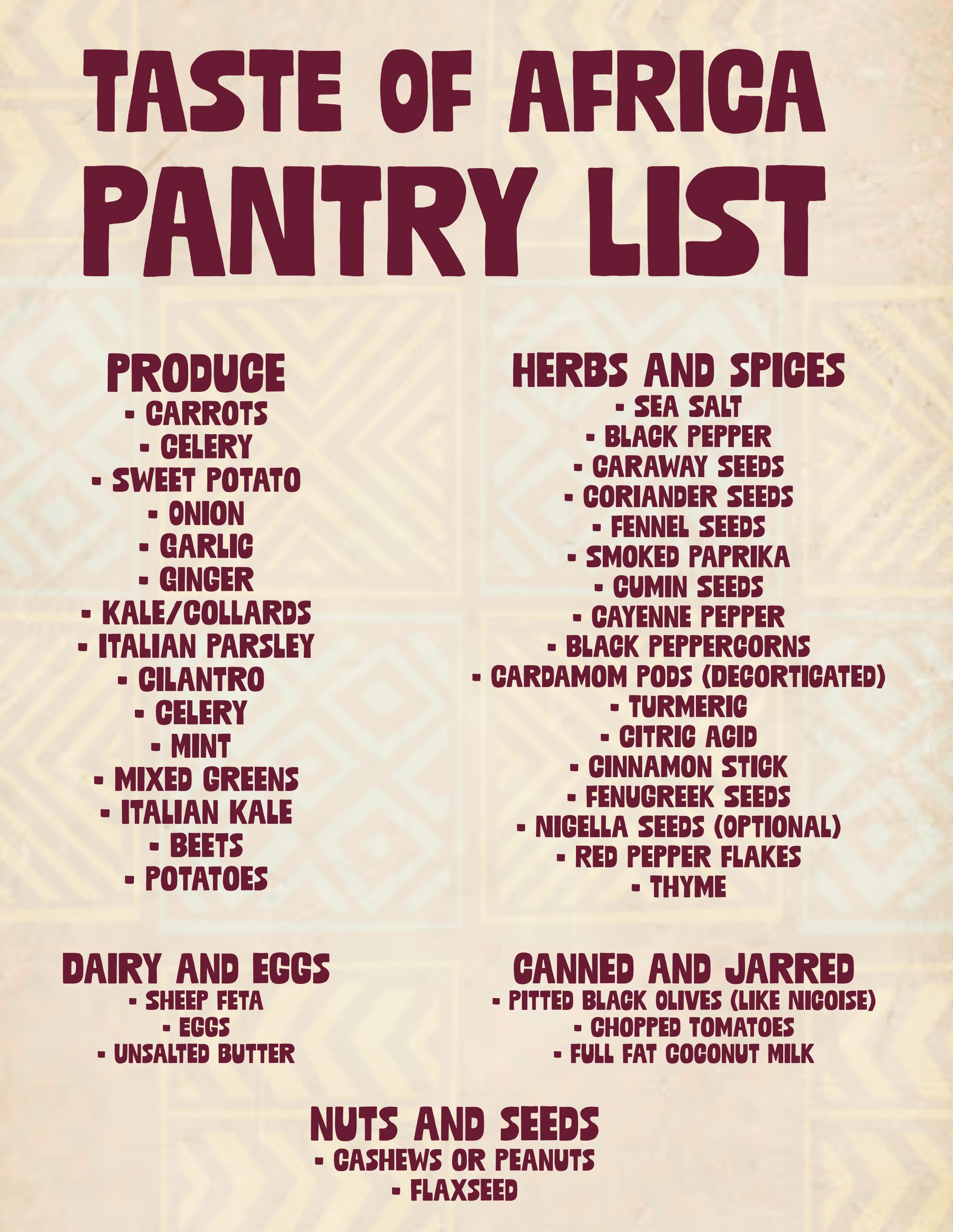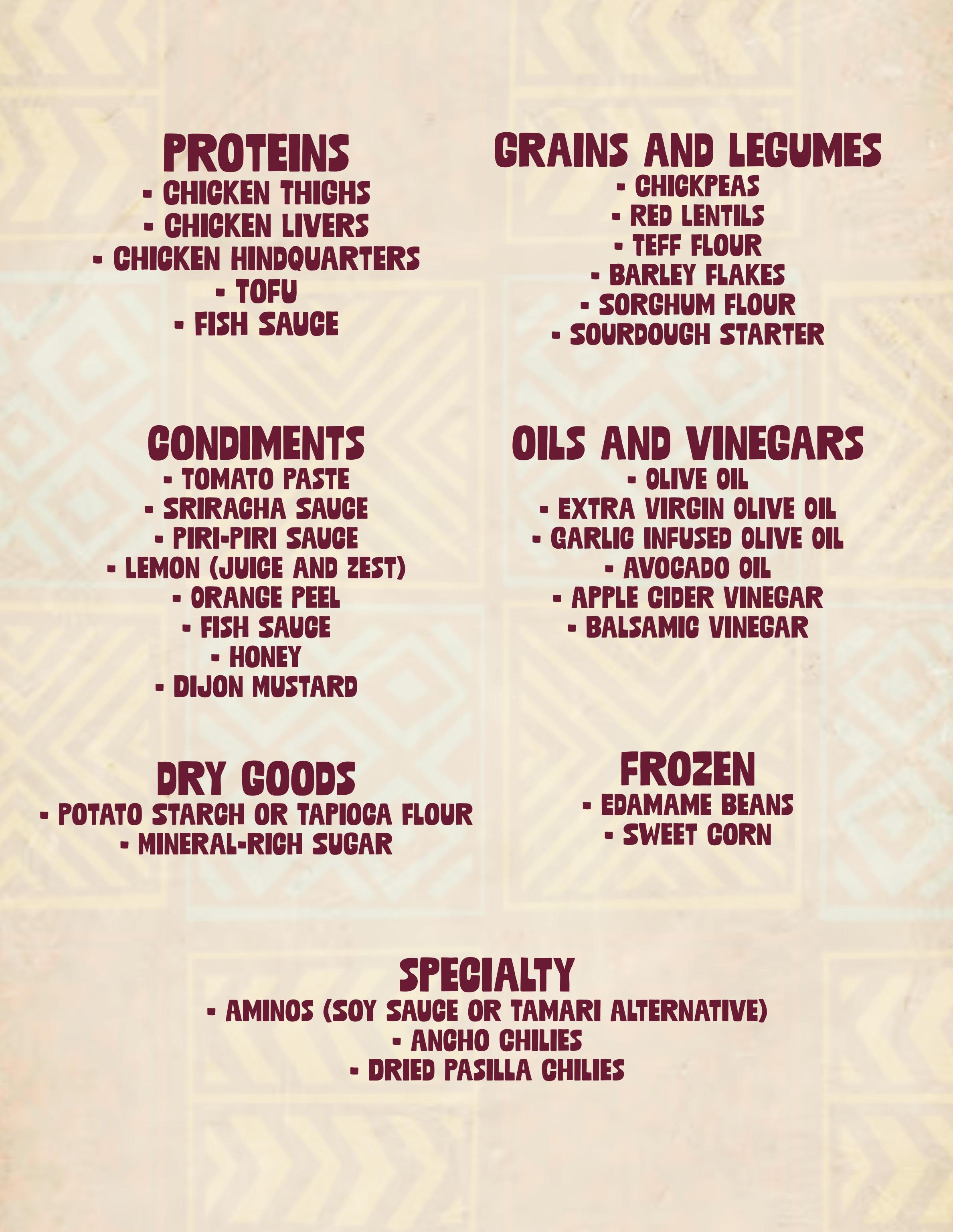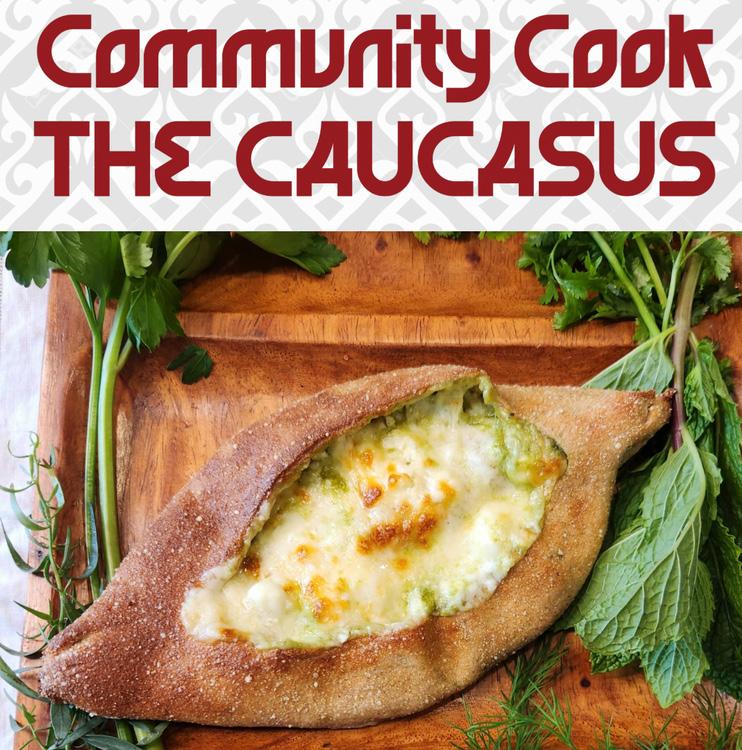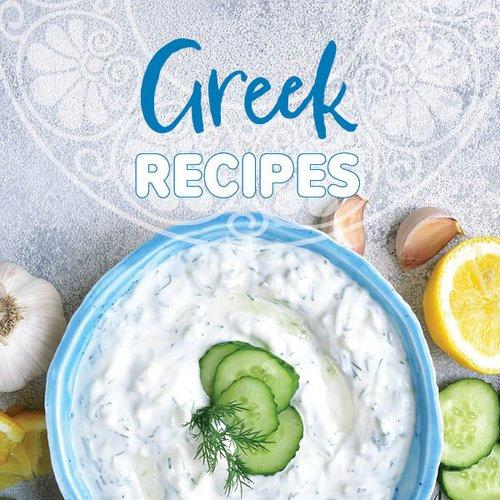Community Cook a taste of africa
Recipes from the Mother Continent

North African Pan African andrecipes!Ethiopian






Born and raised in Southern Oregon, Sidonie shares her creativity and cooking expertise with everyone she meets. Never aspiring to be a restaurant chef, she instead flourishes in her kitchen laboratory where she cooks, blogs, and develops original recipes.
The heart of her cooking practice is a dedication to starting from scratch and building techniques from traditional world food wisdoms. She was an artisan long before it was popular: gardening, foraging, working on organic farms, living off-grid, preserving, fermenting and grain-free baking from scratch.
You can find her recipes, classes, column and blog posts on The Food Coop’s website https://www.foodcoop.coop/blog
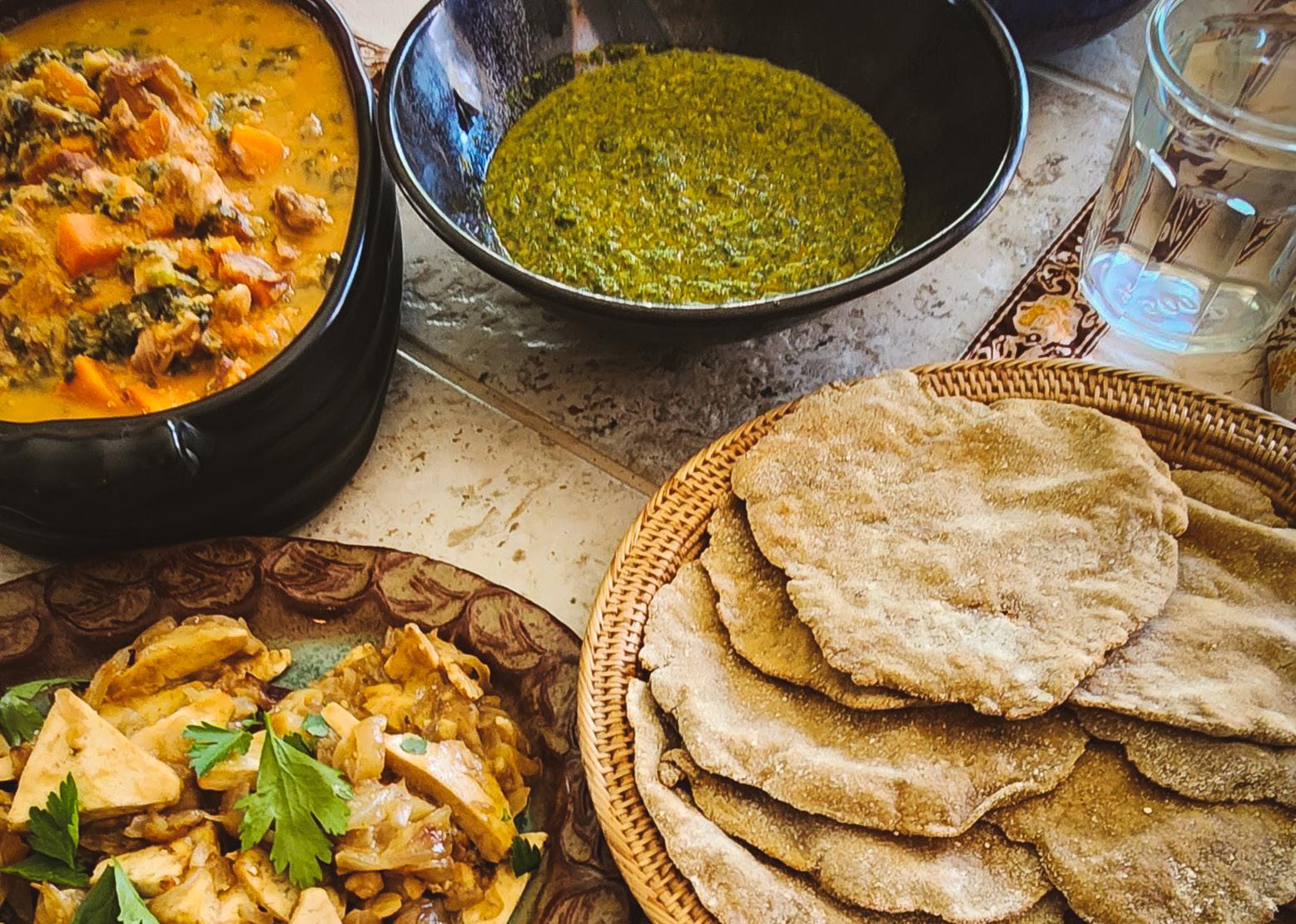
The Port Townsend Food Co-op invites you to Community Cook with recipes created by our Culinary Educator, Sidonie Maroon. Community cook builds ties among community members through learning new techniques, sharing tips and discovering the joy of cooking. For more info go to www.foodcoop.coop/community-cook Join the group at www.facebook.com/cookingwiththecoop
Community Cook is an inspired and innovative Food Coop program designed to bring community and families together around the table. It features recipe pamphlets, instructional videos, and Cooking with the Co-op, a Facebook support group.
We now have six fabulous recipe pamphlets — Vegetarian Indian, Greek, Vietnamese, Italian, The Caucasus, Gluten Free Holiday Baking and upcoming for summer 2024 — A Taste of Africa all available, to download or to view as digital magazines at https://www.foodcoop.coop/ community-cook. Hard copies are available in store for the newest edition.
Community Cook wouldn’t happen without The Food Co-op’s support, and the hardworking and excellent marketing and education department — They’re the ones who make it beautiful and accessible.
I owned a business, F.E.A.S.T. Foodways Education at a Sustainable Table, from 2008 to 2018. Where I, locally, taught international cooking classes.
My model was to gather a group of twelve, split into smaller teams, and cook a feast from world recipes I’d write for the class. We’d end by sitting around a big festive table and enjoying the food we’d made together. So much laughter, goodwill, and learning happened. It was a magical time, but after 12 years, too much work for me.
Perpetually sustaining that level of effort was challenging, but I believed in the desire we have to cook and eat together and the benefits of stepping outside our food comfort zones. I wanted to bring F.E.A.S.T. into everyone’s kitchen.
I want people to cook together and use the Community Cook recipe pamphlets as a sure way to have a successful gathering. I design my recipes to encourage healthy everyday eating. They use colorful in season produce, whole foods and are budget minded. I aim for streamlined yet full flavored cooking methods.
Flavor is always my guiding star and exploring the world’s diverse tastes and techniques is my passion.
Developing recipes involves researching agriculture, climate, history, and people. Comparing and contrasting recipes from various sources, like cookbooks, online platforms, and videos. Delving into our local produce, seasons, community, and considering my audience’s needs.
My aim is not to compile a collection of fancy recipes, but to offer everyday affordable yet amazing meals that are enriched by respecting the flavors and techniques of other cultures.
I approach recipe development like music—combining both theory and intuition, and believe that authentic flavors lead to healthy outcomes.
So, why is this program important? Because cooking brings us together as a learning community. We can learn a lot about cooking kale from the rest of the world. We can expand our repertoire of techniques, flavors, ingredients and immerse hands-on into diversity.

For the sake of adventure, I like to choose culinary places I know little about. Africa proved bigger than I could handle; it would take a lifetime to do it justice, so I ended up mostly exploring Senegal, Tunisia and Ethiopia. I narrowed the recipes down to North African Salads, Sauces and Spreads, Pan African Mains (mostly West African) and an Ethiopian Feast.
I was familiar with Ethiopian, and the recipes are my family’s tried-and-true favorites. The North African recipes, focusing on Tunisia, wowed me. These are some incredible flavor combinations, easy to make and will elevate ordinary cooking. I’m especially fond of the herb jam, carrot salad and the merguez spice mix. The West Africa mains will never leave you wondering what to do with chicken again, or chicken livers, or how to convert a favorite chicken recipe to tofu.
• Amazing indigenous ingredients and foods such as teff (a type of grain used to make injera), berbere spice blend, niter kibbeh (spiced clarified butter), and injera (a sourdough flatbread).
• Arab traders introduced spices like cardamom, cinnamon, and cloves. Indian traders brought spices like turmeric, ginger, and fenugreek.
• Italy briefly occupied Ethiopia in the 20th century, leading to the introduction of pasta in Ethiopian cuisine.
Senegalese cuisine seduced me —
• Using indigenous ingredients from fruits, seafoods to spices.
• The colonial French along with Portuguese, Arab, Islamic and Berber influences.
• French technique in baking and saucing mingled with heightened spicing and bold flavors.
Tunisian cuisine has long been on my bucket list. It’s Berber Influence with dishes using couscous and tagines!
• Arab traders introduced spices like cumin, coriander, and saffron.
• The Ottoman Empire ruled Tunisia for centuries, bringing techniques like grilling and the use of phyllo dough.
• Tunisia was a French protectorate until gaining independence in 1956. French culinary techniques and ingredients like baguettes, pastries, and sauces have influenced Tunisian cuisine.
• Because of its proximity to Italy, Tunisian cuisine has been influenced by Italian flavors and ingredients, such as tomatoes, pasta, and olive oil.
• Of course, the famous spicy chili paste Harissa.
• Slow cooking methods like braising and stewing develop rich and complex flavors.
• Grilling and imparting a smoky flavor to dishes.
• Tunisian cuisine earns its reputation for layered flavors by combining sweet, savory, and spicy elements in dishes to create a harmonious balance.
The recipes featured in Taste of Africa are ideal for everyday cooking and hosting gatherings. While I recommend staying true to the flavors in the recipes, I also encourage you to venture out and discover the abundance of summer produce options available. I crafted and tested these recipes during late winter, envisioning summer’s squashes, tomatoes, peppers, and other seasonal ingredients. By varying the produce, the recipes are sure to please year-round.
The Taste of Africa Recipe Collection centers on food, but it’s important to acknowledge that food is intertwined with various aspects of life. For a more in-depth exploration of food culture, geography, and politics, I urge you to embark on your own culinary adventures.

Orange Black Olive Feta Carrot Salad
Herb Jam with Olives and Lemon
Harissa
Chermoula
Sweet Potato and Kale Salad
Merguez
Pita Dough
West African Chicken and Cashew Stew
Sheet Pan Creamy Chicken Liver Curry
Tofu Yassa
North African Beans and Green stew Ethiopian Feast
Spicy
Ethiopian Chicken Stew (Doro Wot)
Nit'ir Qibe: Spiced Ethiopian Clarified Butter
Misser Wot: Ethiopian Red Lentil Stew
Ye'Abesha Gomen: Ethiopian Spiced Kale
Collard Greens Side Dish
Berbere Spice Mix
Injera
Ethiopian Style Beet and Potato Salad
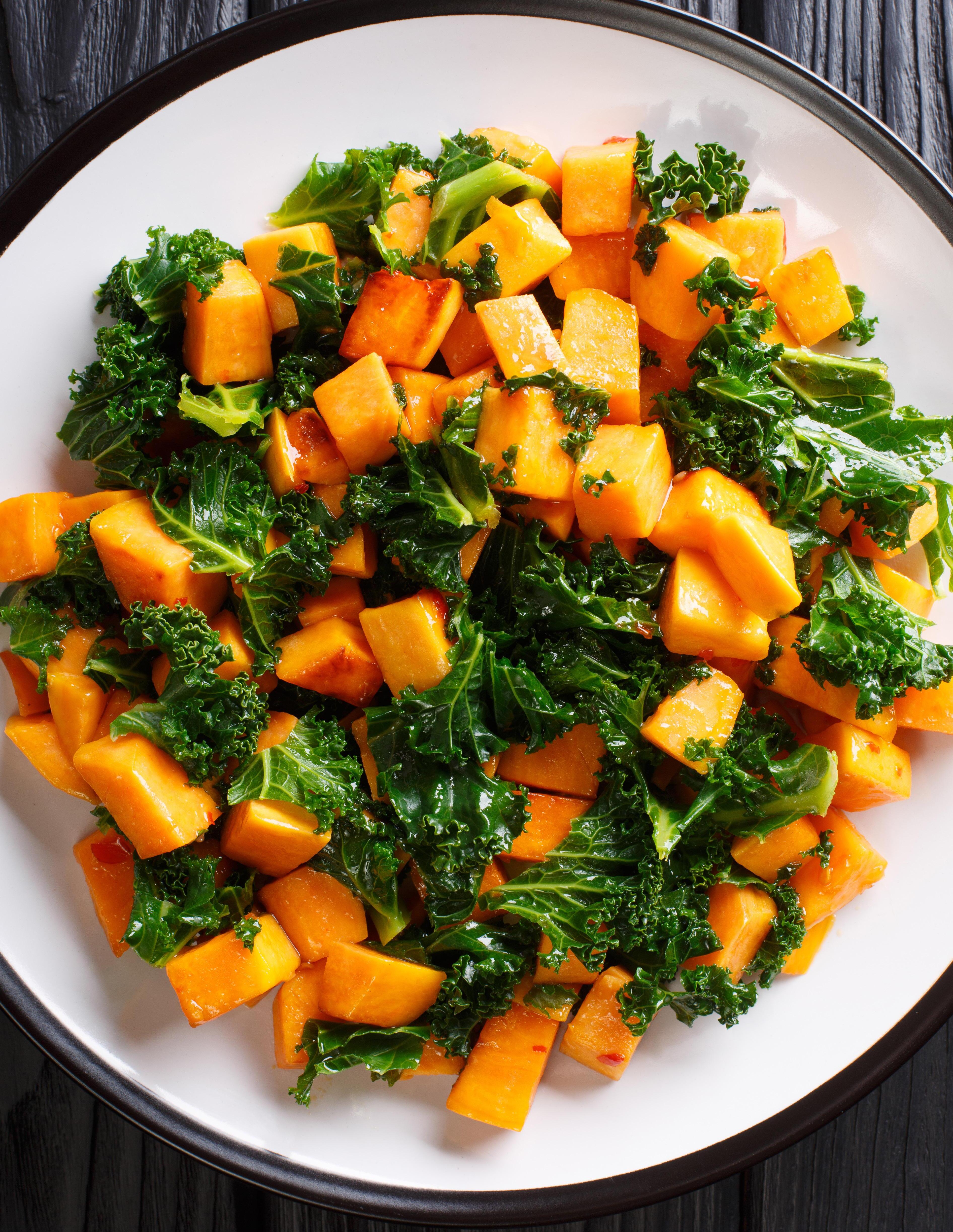

Tunisian: Serves 4
Serve this spectacular salad alone, as a stuffing component for sandwiches or wraps. Or, try it as a side for the chickpea dish.
4 medium carrots, grated
4 ribs celery, diced
¼ cup Italian parsley, chopped
½ cup sheep feta, crumbled
¼ cup pitted black olives, like nicoise, sliced
Dry spices
½ teaspoon whole caraway seed
½ teaspoon whole coriander seeds
¼ teaspoon sea salt
½ teaspoon whole fennel seed
Wet ingredients
1 clove garlic, minced
Zest of 1 Orange
3 tablespoons olive oil
1 ½ tablespoons fresh lemon juice
½ teaspoon Sriracha sauce (or more to taste)
Grind dry spices in a spice or coffee mill. Blend wet and dry ingredients together in a mini blender.
Toss dressing and salad ingredients together and serve. It keeps well for several days refrigerated.
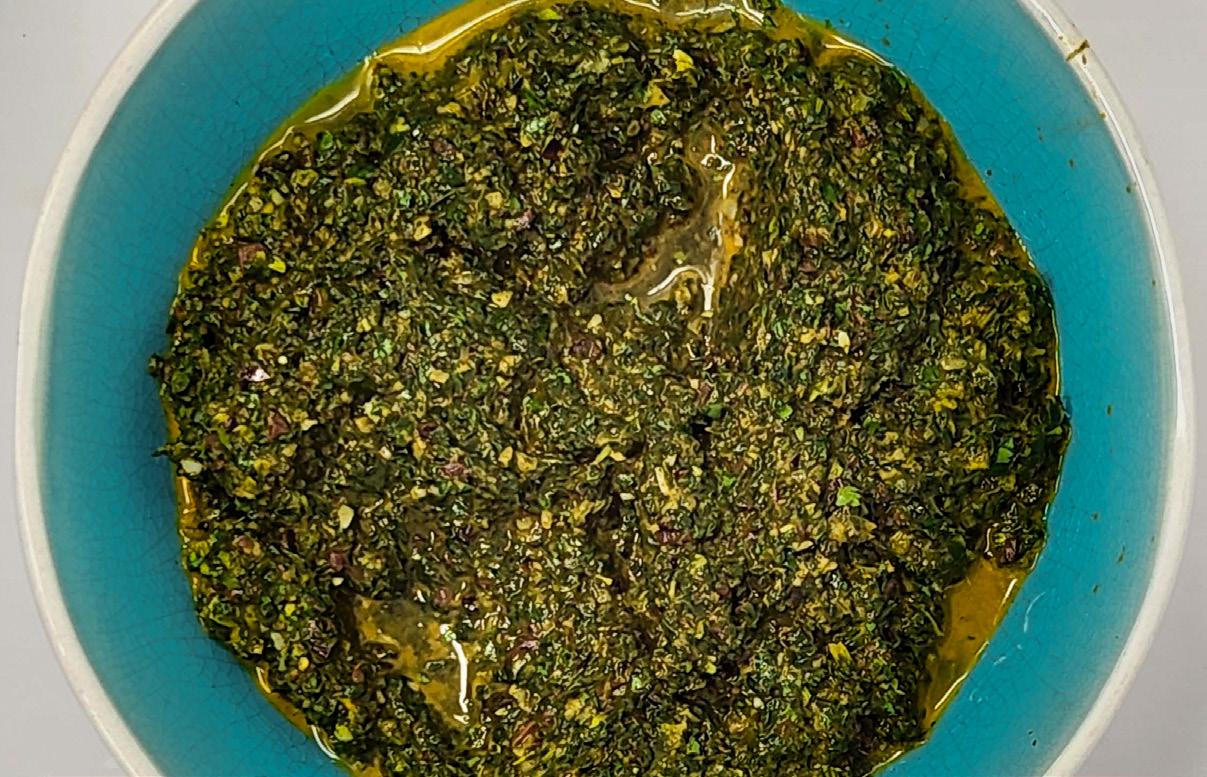
Baqqala, Moroccan: Makes 1 ½ cups
What could be better, but a thick puree of greens, herbs, olives and lemon to spread on toasty bread?
4 cups greens (like spinach, mustards, kale, nettles or a mix, chopped with tender stems included)
1 cup parsley, chopped
½ cup cilantro leaves, chopped
½ cup celery leaves, chopped/or chopped celery
½ teaspoon sea salt, for blanching water
¼ teaspoon black pepper
2 teaspoons smoked paprika
4 large cloves garlic, halved
⅓ cup extra virgin olive oil
⅓ cup pitted black olives, chopped
Fresh lemon to taste
Sea salt to taste
Before preparing the ingredients, fill a pasta pot with water and bring to a boil. Add the salt once it’s boiling.
Once the water is boiling, add the greens and garlic. Bring it back to a boil before timing 3-5 minutes. After 3-5 minutes, or when tender, use a skimmer/strainer to remove the greens from the water.
Squeeze the excess water off of the greens and add to a food processor with the other ingredients except the olives. Pulse until smooth. Add olives and pulse briefly. Taste and add salt and lemon.. It should be chunky-smooth.
Serve or refrigerate and use within a few days.
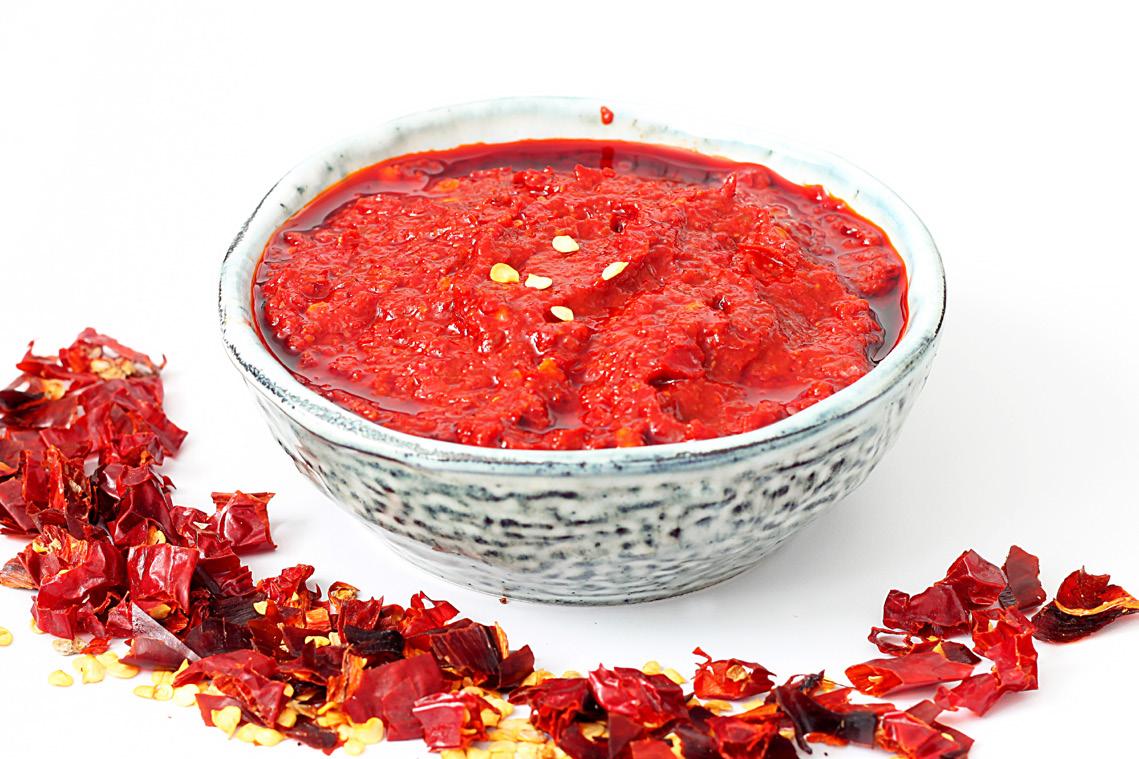
North African: Makes about 1½ cups
Here’s my mild version of the fiery and aromatic chili paste that is a staple in North African cooking. It's versatile and can be used in everything from marinades to soups and stews.
4 dried ancho chilies
1 teaspoons cumin seeds
1 teaspoons coriander seeds
¾ teaspoon caraway seeds
¼ cup fresh lemon juice
2 tablespoon tomato paste
1 teaspoon smoked paprika
1 teaspoon sea salt
½ teaspoon cayenne or to taste
⅔ cup garlic infused olive oil (recipe follows)
A few tablespoons chili soaking water
Cover the chilies with boiling water and allow them to soften for 30 minutes. Remove the stems and seeds. You’ll use some of the water when you blend the sauce
Toast the whole spices and grind them in a spice grinder.
Add all of the ingredients to a blender and puree until smooth.
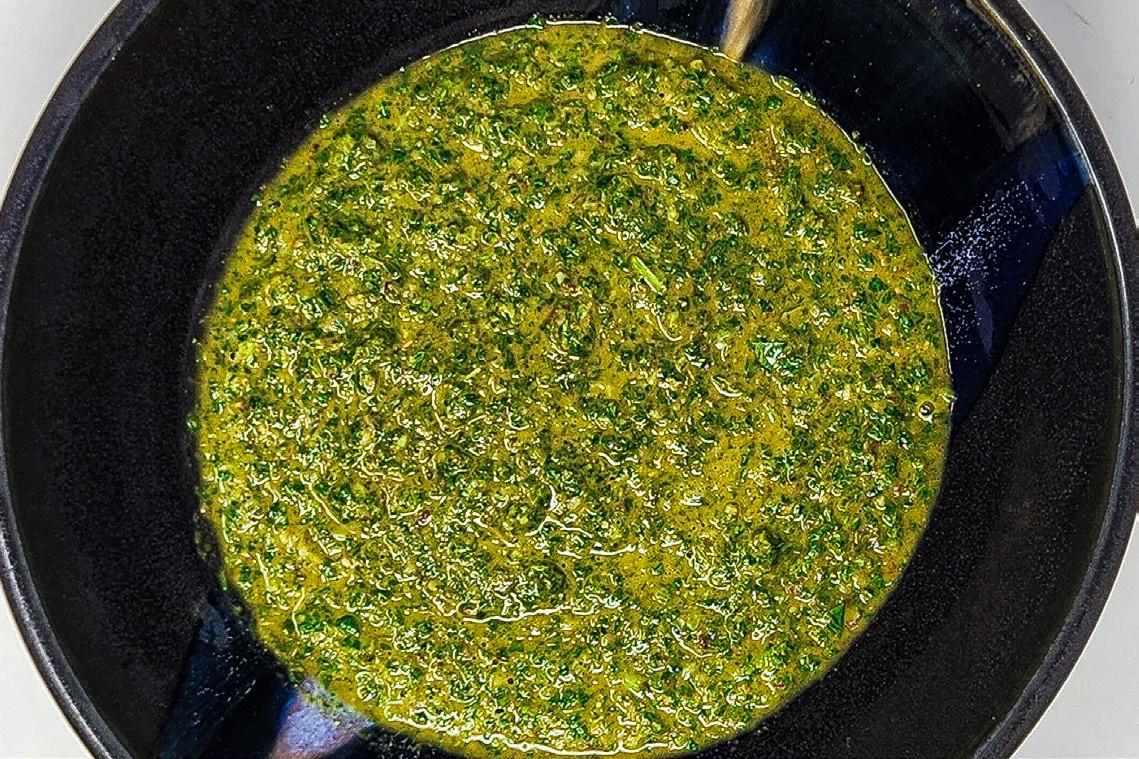
Makes about 1½ cups
Chermoula or charmoula is a marinade and relish used in Algerian, Libyan, Moroccan and Tunisian cooking.
1 cup (packed) parsley chopped (leaves and tender stems)
1 cup (packed) cilantro chopped (leaves and tender stems)
½ cup mint leaves, chopped
1 teaspoon toasted, and freshly ground coriander seeds
1 teaspoon toasted, and freshly ground cumin seeds
2 cloves garlic, crushed
Juice and zest of one medium lemon
1 teaspoon coarse sea salt
1 teaspoon smoked paprika
¼ teaspoon red pepper flakes
½ cup extra virgin olive oil (or more if needed)
Toast the spices and grind.
Using a food processor or blender, add the garlic and pulse until fine.
Add the other ingredients and pulse until smooth but with some texture. The sauce will keep refrigerated for 1 to 2 weeks.

North African: Makes about 1½ cups
1 large sweet potato, diced with skins
1 bunch Italian kale, finely cut
½ cup chopped parsley
1 clove garlic, minced
Juice and zest of one lemon
⅓ cup extra virgin olive oil
¼ teaspoon cayenne or red chili flakes
1 teaspoon fennel seed
2 teaspoons paprika
½ teaspoon sea salt or more to taste
Bring a large pot of water to a boil, add a teaspoon of sea salt. Add the sweet potato, bring back to the boil and time 5 to 7 minutes or until fork tender. Skim out with a strainer or spider, and add to a large shallow salad bowl. Add the kale to the boiling water and time, when it returns to a boil, about 6 minutes, or until tender. Remove in the same way. Cool and squeeze any excess water out. Add it to the salad bowl.
Meanwhile, grind the fennel, cayenne, salt and paprika together in a spice grinder. Blend, in a small food processor, the ground spices, garlic, lemon juice, zest, and olive oil.
Pour the sauce over the vegetables, and add salt if needed.
Serve with protein of choice
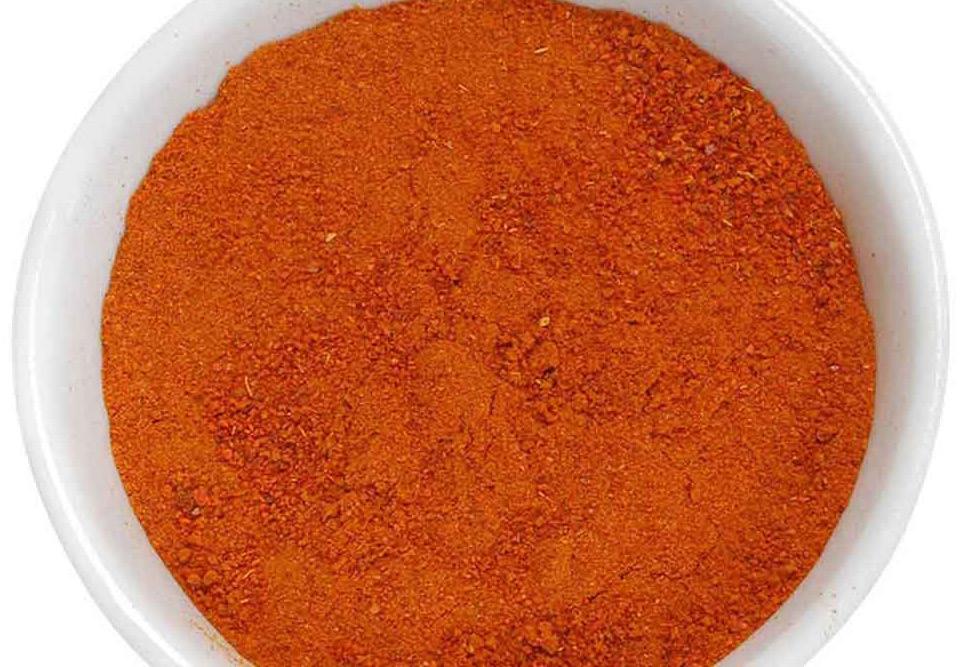
Cumin seed: 3 tablespoons + 1 teaspoon
Fennel seed: 3 tablespoons + 1 teaspoon
Coriander seed: 3 tablespoons + 1 teaspoon
Cayenne: 1 tablespoon
Ground cinnamon: 1 tablespoon + 2 teaspoons
Garlic, minced: Roughly 14 tablespoons
Sea salt (fine): 3 tablespoons + 1 teaspoon
Olive oil: 1 cup
Fresh mint: 1 ¼ cups
Fresh cilantro: 1 cup
Paprika: 2 tablespoons + 1 teaspoon
1 teaspoon cumin seed
1 t fennel seed
1 teaspoon coriander seed
1/4 teaspoon cayenne, or hotter if wanted
1/2 teaspoon ground cinnamon
4 cloves garlic, minced
1 teaspoon sea salt fine (real salt)
3 tablespoons olive oil
2 tablespoons fresh mint or 1 t dried
3 tablespoons fresh cilantro
2 teaspoons paprika
¼ t citric acid
Dry roast whole seeds, grind. Combine with other spices, add fresh finely minced garlic, fresh herbs, use fine sea salt (REAL salt) Use extra virgin olive oil.
12 small lavash or pitas
2 ½ cups bread flour
1 teaspoon active dry yeast
1 cup warm water (90 to 110 F)
1 teaspoon sea salt
In a mixing bowl, stir the yeast and salt into the flour. Gradually add the warm water while stirring until it makes a shaggy dough. Knead on a floured board until it’s smooth and elastic for about 5 minutes.
Divide the dough into 12 evenly sized balls. Place the balls on a floured surface. Press each ball flat with your fingers, keeping it round. On a floured board and with a floured rolling pin, roll from the center outwards, giving a quarter turn as your roll. For lavash you are aiming for a 9-inch round. Remember, you’ll want it to fit on your baking stone. For pitas, roll to between 5 and 6 inches. When all 12 breads are rolled out, allow them to proof in a draft free warm place for 45 minutes, covered with a clean lightweight tea towel.
Preheat the oven to 480 F or as high as your oven will go. If you have a baking stone, let it preheat. If not, bake the breads on a baking sheet.
For the lavash, bake for 2 minutes per side, and for pita 3 minutes per side. You may need to adjust the timing depending on your oven. They should be golden brown, and the pita hopefully will puff up.
Repeat the process until all the breads are baked.
Alternatively, refrigerate the dough after it’s kneaded and portioned, but not rolled out. It will slowly rise overnight. You can bring it to room temperature, roll and bake the breads right away.
12 small lavash or pitas
1/2 cup dry chickpeas
1/2 cup dry buckwheat groats
1/2 cup pre-washed quinoa
1/4 cup tapioca flour
1/4 cup flax seeds
2 tablespoons psyllium seed husk powder
1 teaspoon sea salt
Other Ingredients
1 teaspoon active dry yeast
1 and 1/2 cups warm water
½ cup pre-washed quinoa to grind into flour for rolling out the breads.
Using a high-speed blender (Vitamix): Grind the dry ingredients, except the yeast, together into a flour and sift into a large mixing bowl.. Grind the extra quinoa into flour, sift and set aside to use when you roll out the dough.
Stir the dry yeast into the flour. Pour in one and a half cups of warm water and stir until the dough forms. Let the dough proof in a warm place for one hour.
Preheat the oven to 480°F and place a baking stone inside. Divide the dough into ten balls and roll out each ball with the quinoa flour into very thin rounds.
Use a pizza peel to place a lavash on the preheated baking stone and bake for 2 ½ minutes per side.
Remove the flatbreads from the oven and continue to bake the others. Serve Immediately. Breads can be rewarmed.
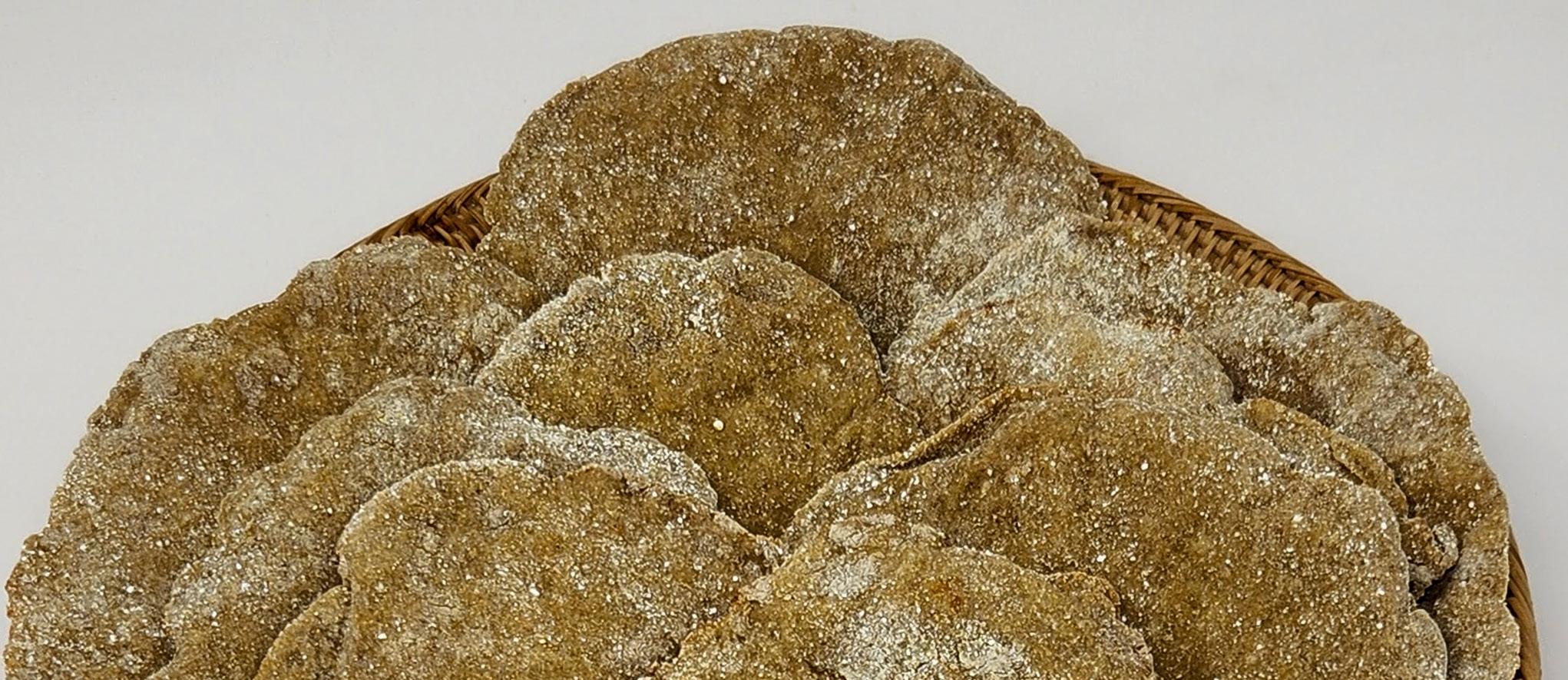
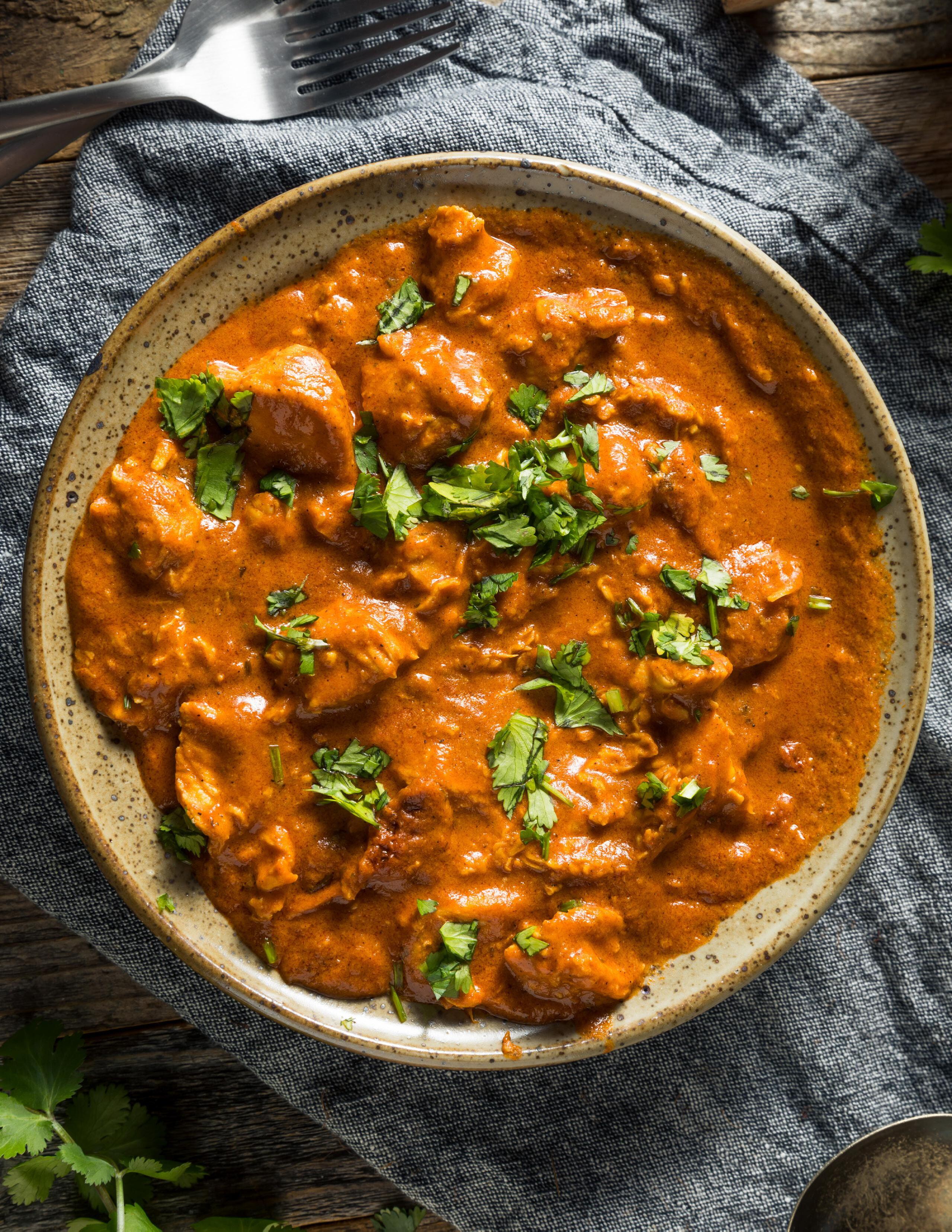
Ingredients
Inspired by a West African Peanut and Chicken Stew: Serves 4
1 pound chicken thighs, boneless and skinless
14-ounce can chopped tomatoes
1 medium onion, diced
3 cloves garlic, minced
1 tablespoon fresh ginger, minced
2 cups water or stock
1 tablespoon fish sauce
2 tablespoons apple cider vinegar
1 teaspoon Sriracha sauce, or to taste
1 cup cashews or peanuts (roasted or raw)
1 bunch kale or collards, finely chopped, include the stems if sweet
1 large sweet potato large diced with skin
Salt, black pepper and lemon to taste
Preparation
asdfasdf
Combine in the Instant Pot: the chicken, tomatoes, onion, garlic, ginger, fish sauce, apple cider vinegar, Sriracha sauce, peanuts or cashews and 2 cups of water or stock. Set to high pressure for 20 minutes with a natural release.
When done, remove the chicken thighs with tongs. Strain the remaining solids from the stock. You will puree the solids in a moment. Return the stock to the inner pot.
Add the kale/collards to the stock in the inner pot. Set the sweet potatoes in a steamer basket on top. (If you don’t have a steamer basket, it’s ok! Just add the sweet potatoes on top of the kale.) Set to 3 minutes with an instant release.
In a food processor or blender, puree the solids until smooth.
Shred the chicken into the pot with the kale, stock, and sweet potatoes. Stir in the pureed sauce. Taste and add about ¾ teaspoon salt, big pinch black pepper, and about 2 teaspoons more vinegar or lemon juice. Serve warm.

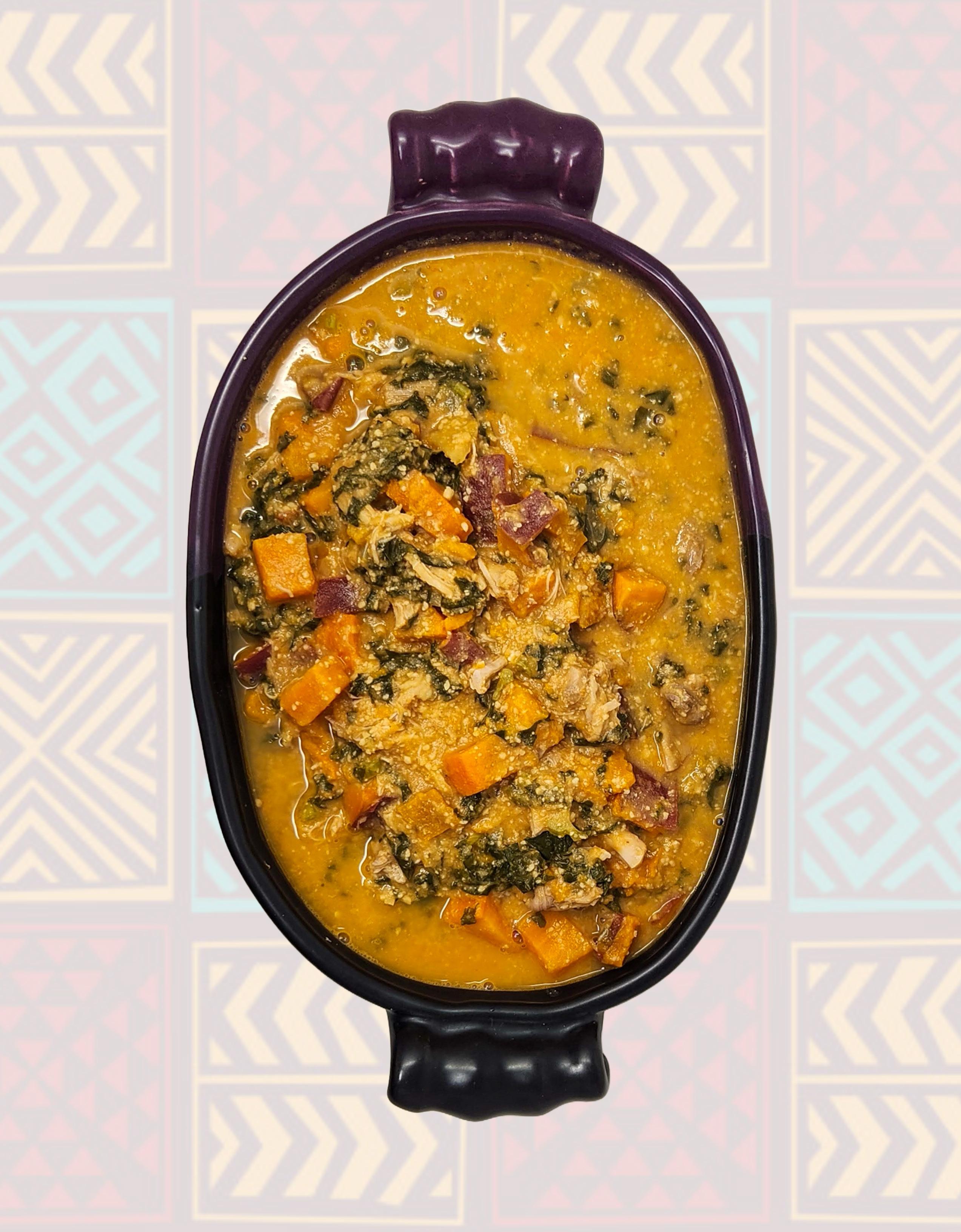
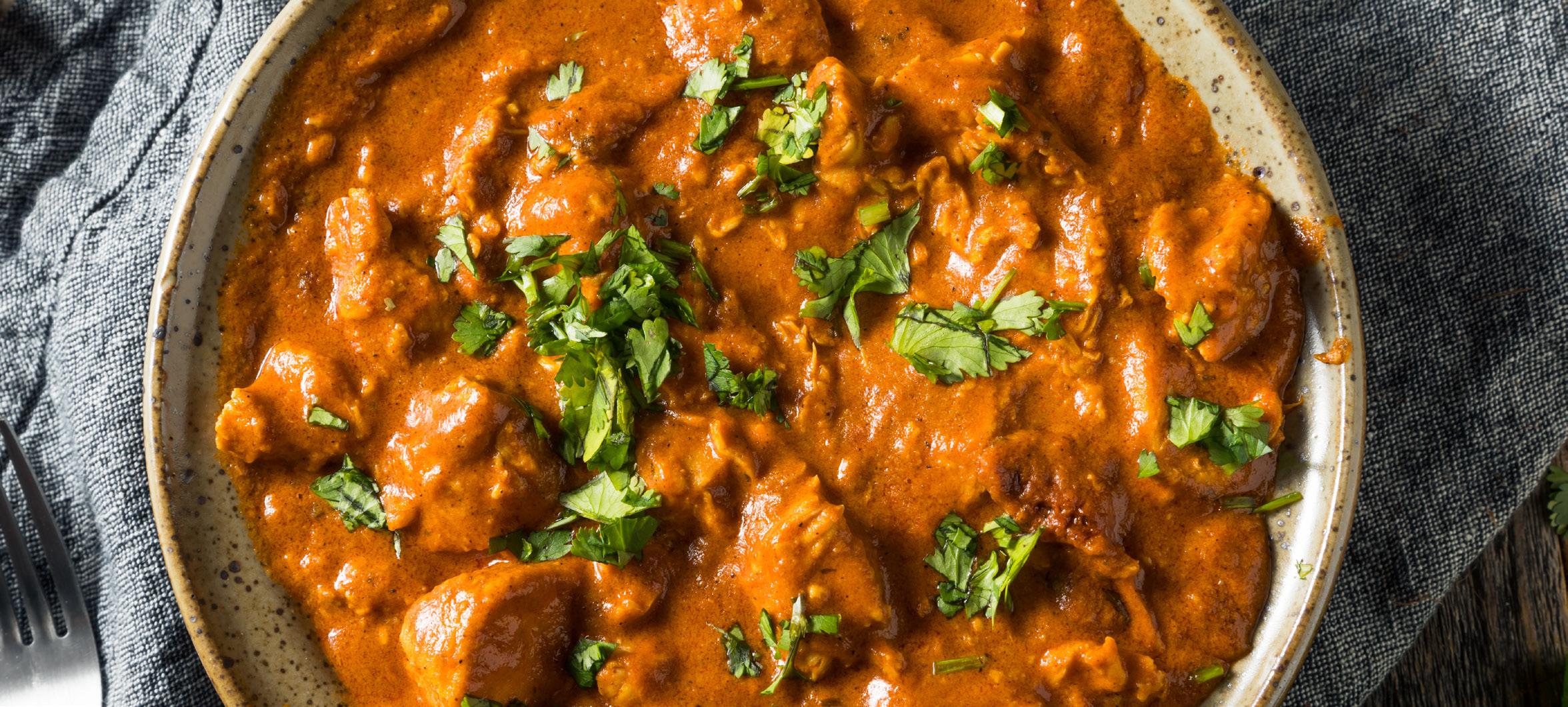
South African: Serves 4
1/4 cup olive oil
2 medium onions, chopped
2 medium carrots, chopped
2 celery stalks, chopped
2 cloves of garlic, minced
2 teaspoons fresh thyme
1 pound organic chicken livers, remove any gall (dark purple small round pieces)
3 tablespoons tomato paste
14-ounce can full fat coconut milk
1 teaspoon sea salt
2 to 3 tablespoons Cape Town curry powder, recipe follows
1/2 cup chopped parsley or cilantro
Squeeze of lime, Salt and pepper to taste, piri-piri sauce or hot sauce of choice
¼ cup paprika
2 tablespoons coriander seed
1 tablespoon turmeric
1 tablespoon cumin seed
1 teaspoon cardamom decorticated
1/2 teaspoon cayenne pepper
1/2 teaspoon black peppercorns
1/4 teaspoon citric acid
Squeeze of lime, salt and pepper to taste, piri-piri sauce or hot sauce of choice
Prepare curry powder ahead of time. Preheat the oven to 425°F and ready a sheet pan with parchment paper. Massage the onions, carrots, celery, garlic, thyme and Cape Town curry with olive oil. Roast for 20 minutes, stirring once.
Put chicken livers in a work bowl, lift them with tongs,individually onto a plate. Remove any pieces of gall. They are dark black, roundish. The gallbladders are usually taken out of chicken livers, but some may remain and they are bitter. I don't usually remove connective tissue, but you can if you want. After 20 minutes, use tongs, to lay the chicken livers onto the sheet pan, and gently stir them into the onions. Continue cooking for another 15-17 minutes, Or until the livers are no longer pink. I like to cut them into smaller pieces at this point, right on the pan.
Stir the coconut milk, tomato paste and salt in. Taste add more salt, lime zest and juice, curry and heat as wanted. Top with parsley or cilantro
Serve with bread to sop up the sauce, and a big green salad.
Makes 2 Quarts
Serve the parsley at the table with fresh bread and a whipped spread made with 1/4 cup sheep feta, 2 T butter and 2 T olive oil.
Chickpeas
1 ½ cups dry chickpeas, soaked overnight if using the stovetop method
1 teaspoon sea salt
6 cups water
1 bunch kale, finely chopped, including stems
Sheet Pan
1 large onion, chopped
2 medium carrots, diced
1 medium sweet potato, chopped
2 ribs celery, diced
3 large cloves garlic, minced
¼ cup extra virgin olive oil
Harissa Spice Mix
1 tablespoon sweet paprika
1 teaspoon coriander seed
1 teaspoon cumin seed
¾ teaspoon caraway seed
1 teaspoon sea salt
¼ to ½ teaspoon cayenne pepper or to taste
½ teaspoon cinnamon
Finishing
1 cup frozen edamame beans
1 cup frozen sweet corn
¼ cup Italian parsley, chopped
4 tablespoons tomato paste
¼ cup lemon juice, or more
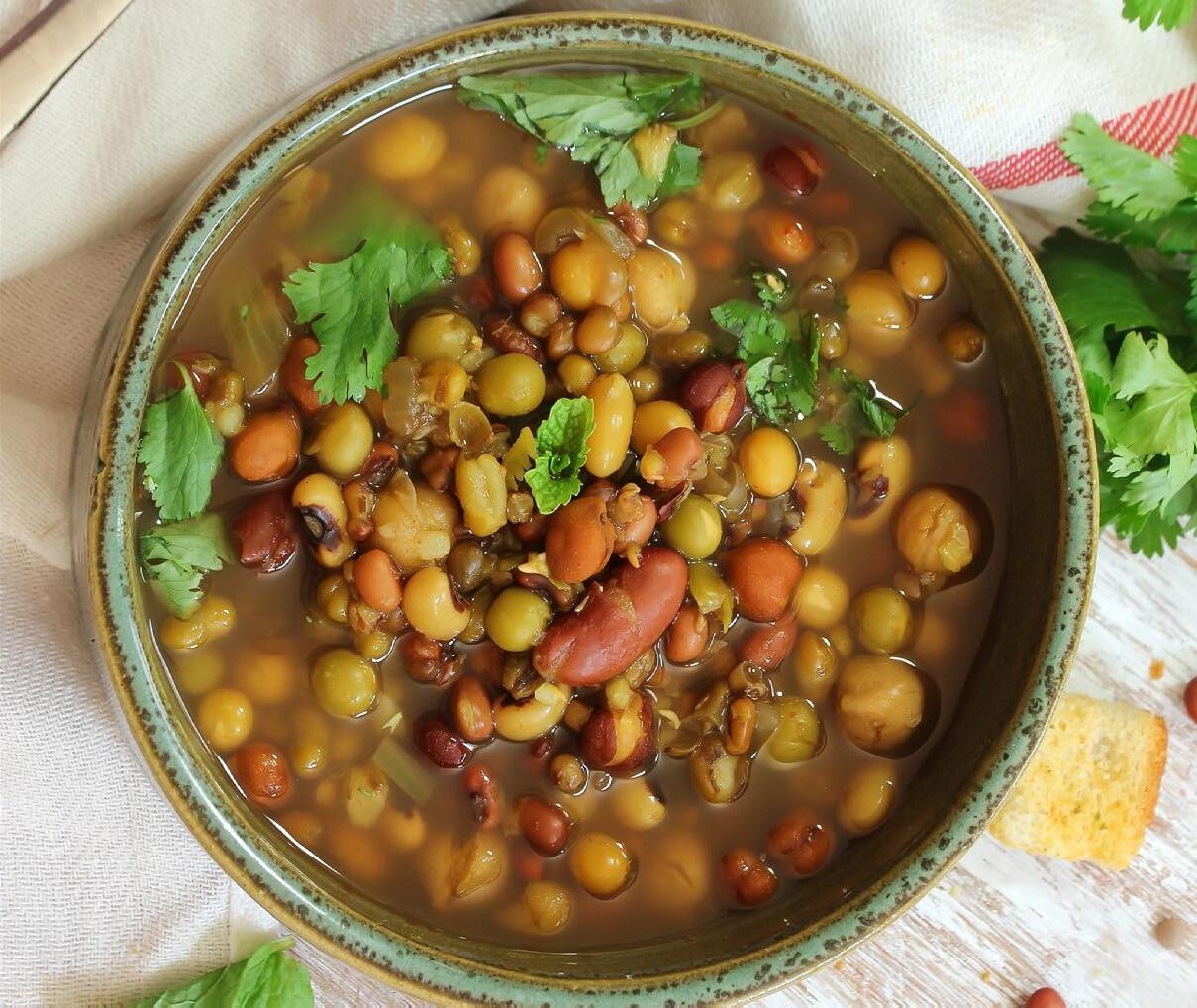
Chickpeas Instant Pot: Add beans to the pot, salt, and water. Set for 45 minutes at high pressure with a natural release. Strain the beans. Pour the bean broth back into the pot. Add the chopped kale and set to high pressure for 3 minutes with an instant release.
Chickpeas stovetop: Soak the beans overnight. Add them to a large pot with fresh water and 1 teaspoon sea salt. Bring to a rolling boil, boil for ten minutes, skimming off any foam, reduce to a medium simmer, cover with an ajar lid and cook until done, about 45 minutes to 90 minutes. Strain the beans and return the broth to the pot. Add the kale and cook at a simmer until soft, about 10 minutes.
Sheet Pan: Preheat the oven to 425 F. Ready a large sheet pan with parchment paper. Prep the veggies. Add the whole spices to a spice grinder and grind into a rough powder. Mix the olive oil and garlic together. Massage the olive oil/garlic and spice blend into the veggies and roast for 35 to 40 minutes. Stir several times.
Finish by adding the chickpeas, kale, broth, roasted veggies, edamame, corn, tomato paste, and lemon juice together. Taste and add more salt or acid if needed. Heat as much stew as you will serve, and refrigerate the rest.
Senegal
A twist on the traditional Senegalese dish Yassa de poulet, which is typically made with chicken. In this version, tofu serves as the protein. It features caramelized onions and a vibrant lemon sauce. Feel free to adapt it to use with chicken, black-eyed peas, or lentils. Whether served with rice and a side salad or used as a filling for wraps, this tofu Yassa is sure to please.
2 large onions, thinly sliced into half moons
1/4 cup olive oil
1/4 cup balsamic vinegar
2 teaspoons fresh thyme
4 cloves garlic, minced
2 teaspoons fresh ginger, minced
1 tablespoon aminos (soy sauce or tamari will work)
Potato starch or tapioca flour (for coating tofu)
1 block of tofu, cut into triangles and patted
Juice of 1 lemon
2 heaping teaspoons Dijon mustard
1/4 teaspoon cayenne or red chili flakes
1 tablespoon honey
Sea salt, to taste
Read through the entire recipe. The onions sweat in the oven, covered. The cover is removed and the roasting sauce is mixed in. Onions roast with the sauce for 15 minutes more. The tofu is added and the dish continues to roast for another 15 minutes.
Preheat the Oven to 425°F (220°C) and line a sheet pan with parchment paper.
Prepare the Onions: Using a food processor, or by hand slice 2 whole onions into thin half-moon shapes. Place the sliced onions on the prepared sheet pan. Cover the pan with another sheet pan (flipped over) to allow the onions to sweat and reduce moisture. Roast in the preheated oven for 15 minutes.
Make the Roasting Sauce: In a blender or by hand, puree together the olive oil, balsamic vinegar, fresh thyme, garlic, and fresh ginger. After the onions have roasted for 15 minutes, remove the top pan and mix the sauce into the onions. Return to the oven, uncovered, and roast for another 15 minutes, stirring once or twice.
Prepare the Tofu: Cut the tofu into triangles and pat dry. Drizzle with 1 tablespoon of aminos and lightly toss in potato starch or tapioca flour.
Combine Tofu with Onions: After the onions have roasted with the sauce for 15 minutes, add the prepared tofu to the sheet pan, mixing everything together. Roast for an additional 10 to 15 minutes, watching closely to prevent burning.
Make the Lemon Sauce: While waiting, In a small bowl, whisk together the lemon juice, Dijon mustard, cayenne or red chili flakes, and honey.
Final Touches: Once the tofu and onions are roasted, add salt to taste and stir the lemon sauce in.
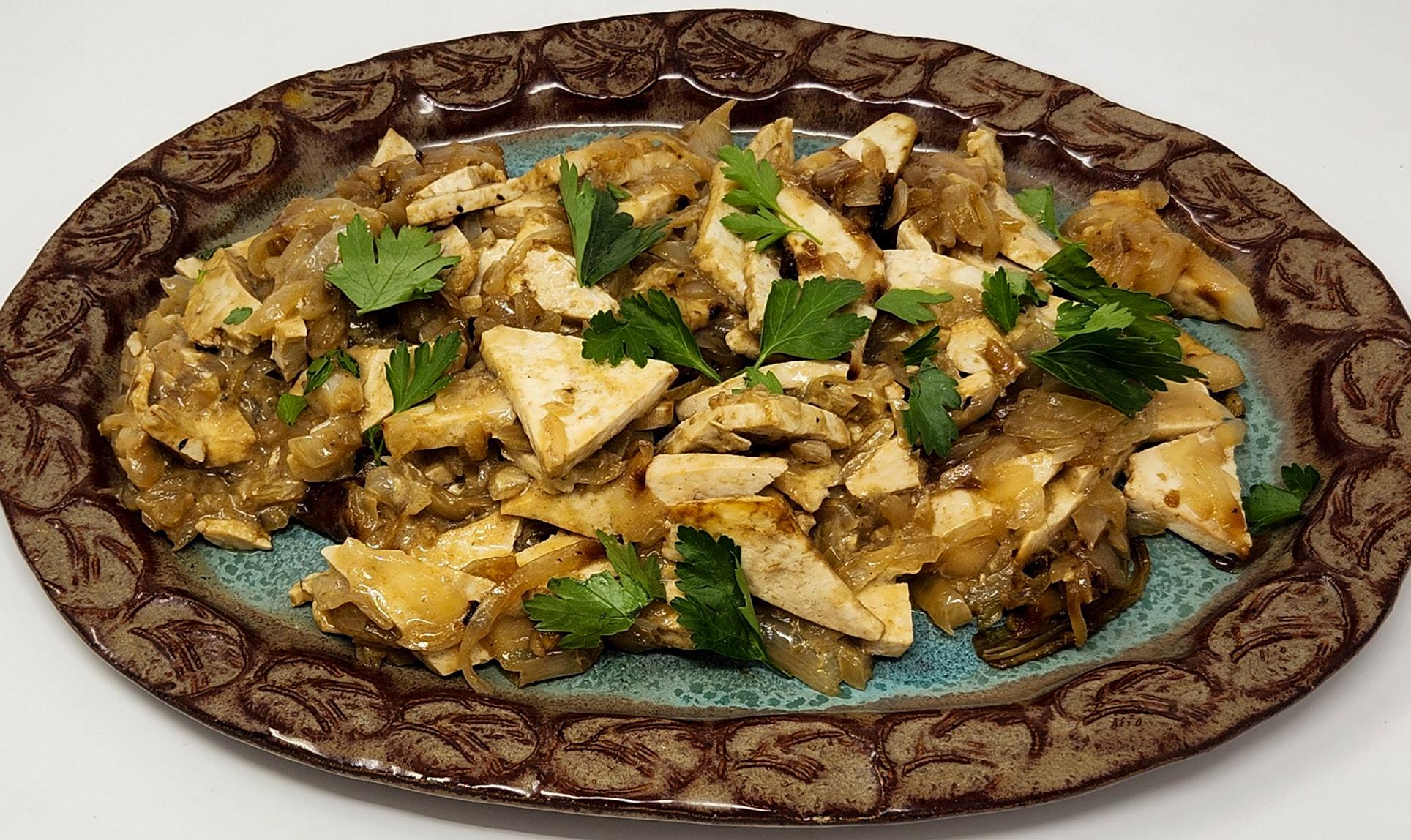



Ethiopian Red Lentil Stew
2 cups red lentils, washed and drained
1 quart water
¼ cup Nit'r Qibe (Ethiopian Spiced Butter)
2 large onions, finely diced
6 cloves garlic, finely minced
2 tablespoons fresh ginger, finely minced
4 tablespoons Berbere (Ethiopian Spice Mix) or to taste
2 teaspoons sea salt
4 tablespoons tomato paste
Sea salt to taste, about 1/2 teaspoon more Apple cider vinegar, about 2 tablespoons Mineral-rich sugar, about 1 tablespoon Hot Chili Sauce, 1 teaspoon
Rinse the lentils well and set aside.
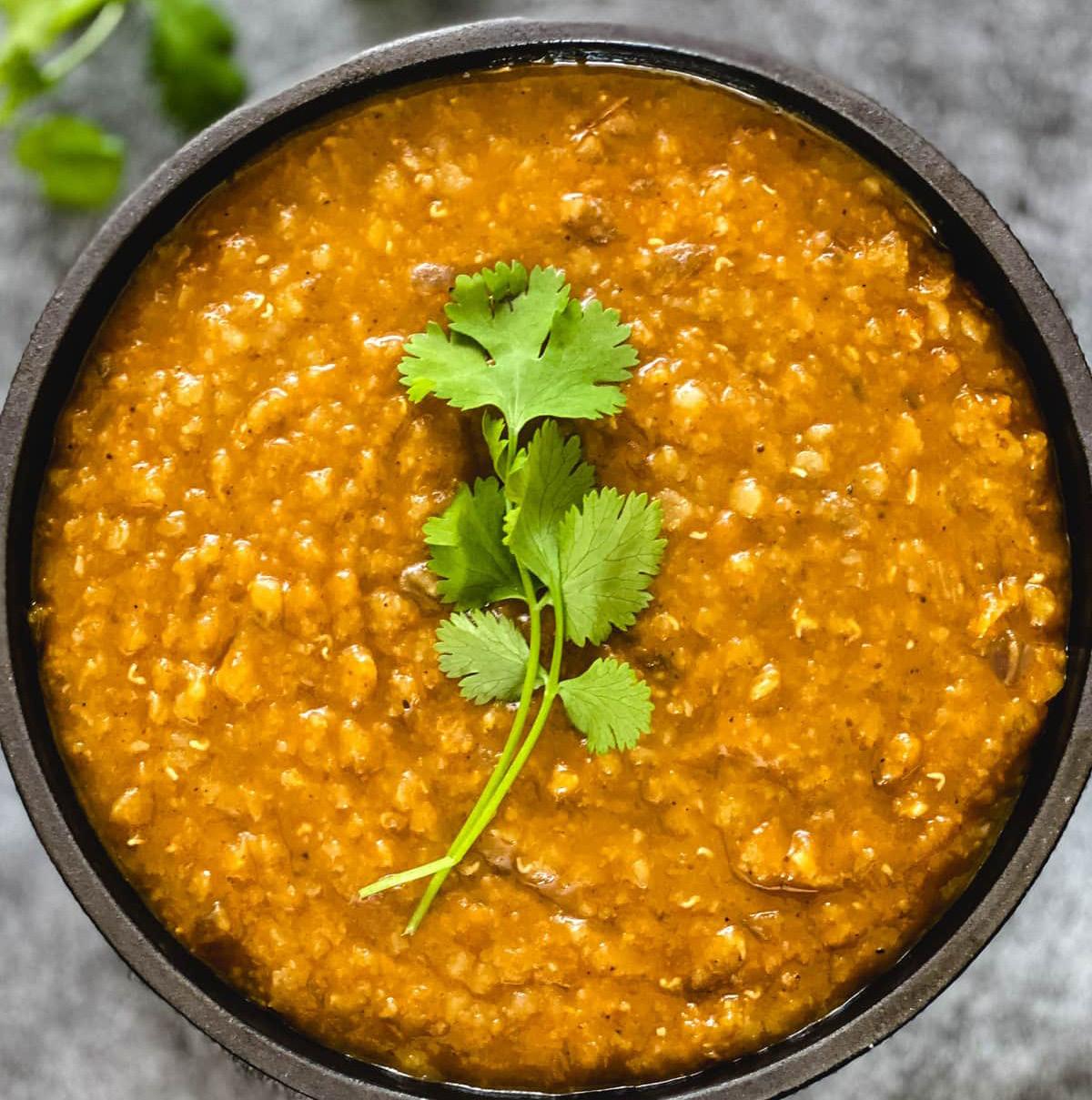
In a large sauté pan (I prefer cast iron), heat the Nit'r Qibe (spiced butter) over medium heat.
Add the diced onions and sauté until they are caramelized, about 20 minutes.
Stir in the minced garlic and ginger and cook until fragrant, approximately 1 minute.
Mix in the Berbere and a bit of water to create a sauce.
Add the lentils, the initial 2 teaspoons of sea salt, and the rest of the water. Bring everything to a boil before reducing to a low simmer. Cover and stir occasionally until the lentils have softened and lost their chalky taste, about 30 minutes. Ensure there’s about an ⅛ inch of liquid above the lentils during simmering, adding water as necessary but allowing the stew to thicken.
Stir in the tomato paste and continue to simmer until fully integrated into the stew.
Final seasoning adjustments: add more sea salt to taste (about 1/2 teaspoon), apple cider vinegar, mineral-rich sugar, and hot chili sauce. Taste and adjust until the flavors are perfectly balanced.
The initial long sauté of onions is key to developing the stew’s rich flavor base. Start this first and use the time to prepare the rest of your ingredients and kitchen cleanup. This stew pairs wonderfully with injera, sautéed greens like collards or kale, fresh cottage cheese, and a simple tomato and cucumber salad seasoned with just salt. The stew freezes excellently for future meals. It's also great for serving large crowds or as a unique school lunch option. Make the essentials like spiced butter, spice mix, and fermented injera ahead.
Ethiopian Cuisine
This delicious stew of chicken and boiled eggs is a popular feast day dish. The trick to its sweet-and-spicy sauce is to cook the onions slowly until they've caramelized making a rich flavor base.
¼ cup Nit'r Qibe (Ethiopian Spiced Butter)
2 large yellow onions, diced into 5 cups medium-size pieces
2 tablespoons minced garlic
2 tablespoons minced fresh ginger, peeled
4 tablespoons Berbere (Ethiopian Spice Mix)
3 tablespoons tomato paste
4 chicken hindquarters, with bones and skin
Sea salt to taste (between 1 and 1 ½ teaspoons)
4 eggs, boiled for 6 minutes and peeled
Begin by heating the Nit'r Qibe in a large skillet over a medium flame.
Once melted, add the diced onions. Stir occasionally, allowing them to slowly caramelize. This should take about 25 minutes.
Next, incorporate the minced garlic and ginger into the skillet. Continue cooking for an additional 6 minutes to meld the flavors.
Stir in the Berbere and tomato paste with a cup of water.
While these simmer, season your chicken hindquarters with sea salt.
Transfer the seasoned chicken and the onion mixture into a slow cooker.
Set the slow cooker on high and let the stew cook for 4 hours.
After 4 hours, remove the chicken from the slow cooker. The meat should be tender enough to easily fall off the bone. At this point, separate the meat from the bones and skin. Reserve the bones and skin for making stock later.
Return the deboned chicken to the stew. Allow it to simmer on high for another 15 minutes to thicken the sauce.
Prepare the boiled eggs by cutting slits into them; this helps them absorb the stew's flavors. Add them to the stew and stir gently to warm through.
Before serving, taste the stew and adjust the seasoning as desired. You may want to add more Berbere or salt, perhaps a bit of hot chili for extra heat, and a splash of vinegar for acidity.


Spiced Ethiopian Clarified Butter
This subtly spiced clarified butter adds a unique flavor to butter sauces, sautés, scrambled eggs, and even popcorn, making it a versatile ingredient in Ethiopian cuisine and beyond. Its simple yet aromatic spice blend ensures it complements rather than overpowers dishes. The slow cooker method offers a convenient, low-maintenance approach to making clarified butter, perfect for those who prefer to "set it and forget it."
2 pounds unsalted butter
1 cinnamon stick
12 whole green cardamom pods, lightly crushed
1 teaspoon whole fenugreek seeds
2 teaspoons cumin seeds
3 tablespoons fresh ginger, minced
5 cloves garlic, peeled
Place 2 pounds of unsalted butter into a slow cooker. Add the cinnamon stick, crushed cardamom pods, fenugreek seeds, cumin seeds, minced ginger, and peeled garlic cloves to the butter.
Turn the slow cooker on low. Allow the butter to infuse with the spices and clarify over approximately three hours. Ensure the butter simmers gently without coming to a boil. If your slow cooker tends to run hot, slightly open the lid or adjust the setting to warm for a period to maintain a gentle simmer.
The Nit'ir Qibe is ready when white milk solids form both on the surface and at the bottom of the slow cooker, with the middle layer of butter appearing bright yellow and clear.
Carefully strain the mixture through a cheesecloth-lined strainer to remove the milk solids and spices. Pour the clarified butter into a storage jar for long-term use. A rectangular quart-sized glass storage container is recommended for ease of use when cold.
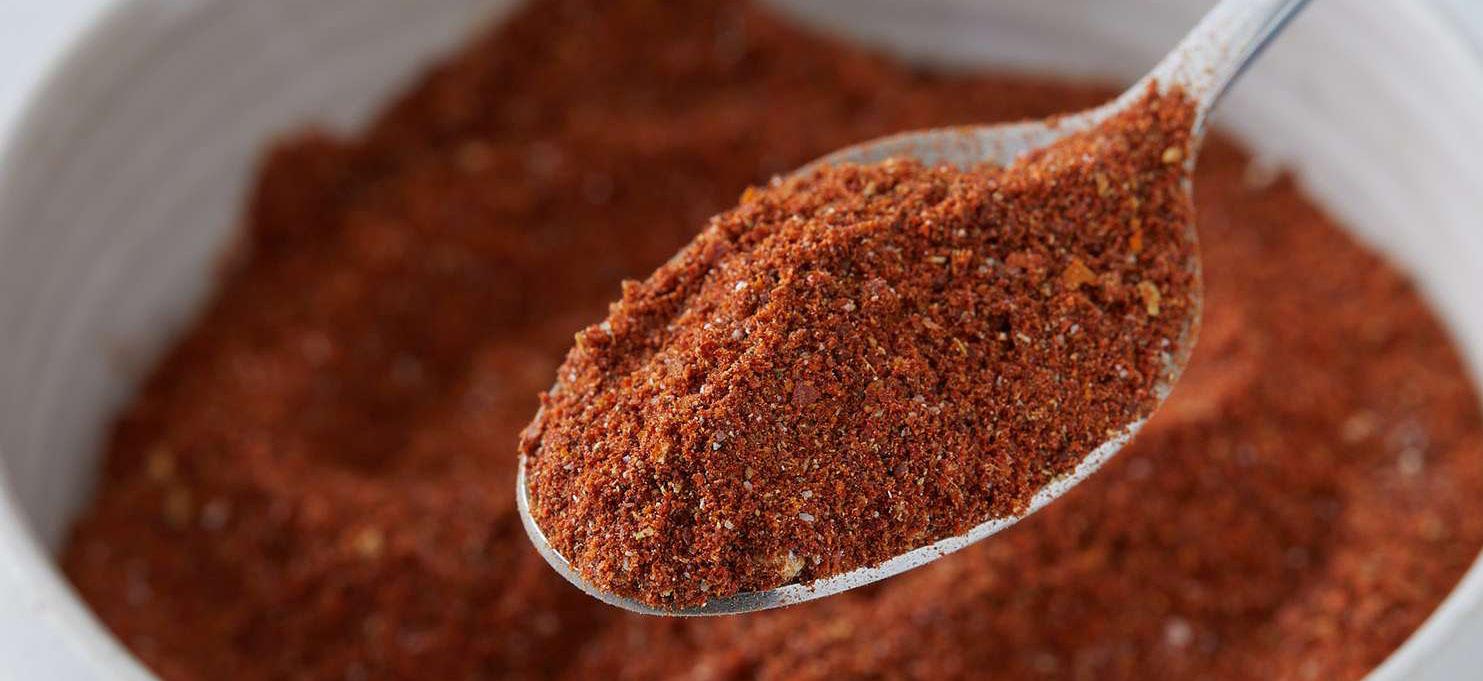
1 cup
Berbere is a cornerstone of Ethiopian cuisine. This recipe tempers the traditional heat. It’s a versatile blend for various dishes from lentil stew (Misr Wot) to chicken stew (Doro Wat), and even as a seasoning for popcorn. Starting with whole spices and grinding them yourself is an extraordinary sensual experience.
4 teaspoons coriander seeds
2 teaspoons fenugreek seeds
1 teaspoon black peppercorns
½ teaspoon whole allspice
12 green cardamom pods
8 whole cloves
2 large dried pasilla chilies, toasted, with seeds
6 tablespoons paprika
1 whole nutmeg, ground
2 teaspoons dried ginger root
1 cinnamon stick
Combine all the spices except the paprika. Use a mortar and pestle to break up the cinnamon stick and nutmeg before toasting. Toast over medium heat on a griddle. Stir until fragrant, about 4 minutes. Grind in a spice grinder and sift.
Next, prepare the chilies by breaking them into small pieces. Discard the stems but keep the seeds. Toast the chilies until fragrant, about 4 minutes over medium heat. It's important to do this in a ventilated area to avoid irritation from the chili fumes. Grind the toasted chilies, including the seeds or without. The seeds will increase the heat! Use a fine mesh strainer to sift them.
In a mixing bowl, combine the paprika, ground chilies and spices.
Store your Berbere Spice Mix in an airtight container. It will keep for up to 3 months.
2-day process, 1 quart makes 12-14 flatbreads
Crepe spreader/crepe pan (optional but helpful; a cast iron griddle and the back of a big spoon can also work)
1 cup teff flour
½ cup barley flakes
⅔ cup sorghum flour
⅓ cup potato starch
2 tablespoons flaxseed (measure, then grind)
½ cup sourdough starter
2 cups filtered water
In a food processor, grind barley flakes into a fine meal. Add teff flour, sorghum flour, potato starch, and ground flaxseed; spin until combined.
Transfer to a mixing bowl; add water and starter and stir.
Cover and let ferment at room temperature for about 12 hours.
The batter should taste pleasantly sour and appear puffed.
Dissolve salt and baking soda in ½ cup water; mix into the batter. Adjust consistency to thick cream with more water if needed.
Preheat a cast iron crepe pan on low for 10 minutes, then increase to medium heat. Prepare a warming oven and a dish to hold the injeras.
Lightly butter the griddle (use Nit’r Qibe Ethiopian Spiced butter for authenticity).
Pour ⅓ cup of batter into the center of the buttered pan.
Use a crepe spreader or turn the pan itself to spread the batter thinly.
Cover with a large lid; cook for 1 minute until spongy with bubbly holes on top.
Transfer to the oven; repeat for remaining batter.
1 teaspoon salt
1 teaspoon baking soda
1 cup water
Extra water and ¼ teaspoon increments of baking soda for multiple sessions
Batter keeps refrigerated for 3-4 days. For more bubbly holes in later batches, add ¼ teaspoon baking soda dissolved in water to the batter.
This recipe aims for whole grain nutrition without wheat, using ground flaxseed for extra nutrition and potato starch for moisture. Sorghum and barley add traditional flavors, while a gluten-free firm levain ensures quick, reliable fermentation. Baking soda added before cooking creates bubbles for a spongy texture. The smaller size makes handling easier.

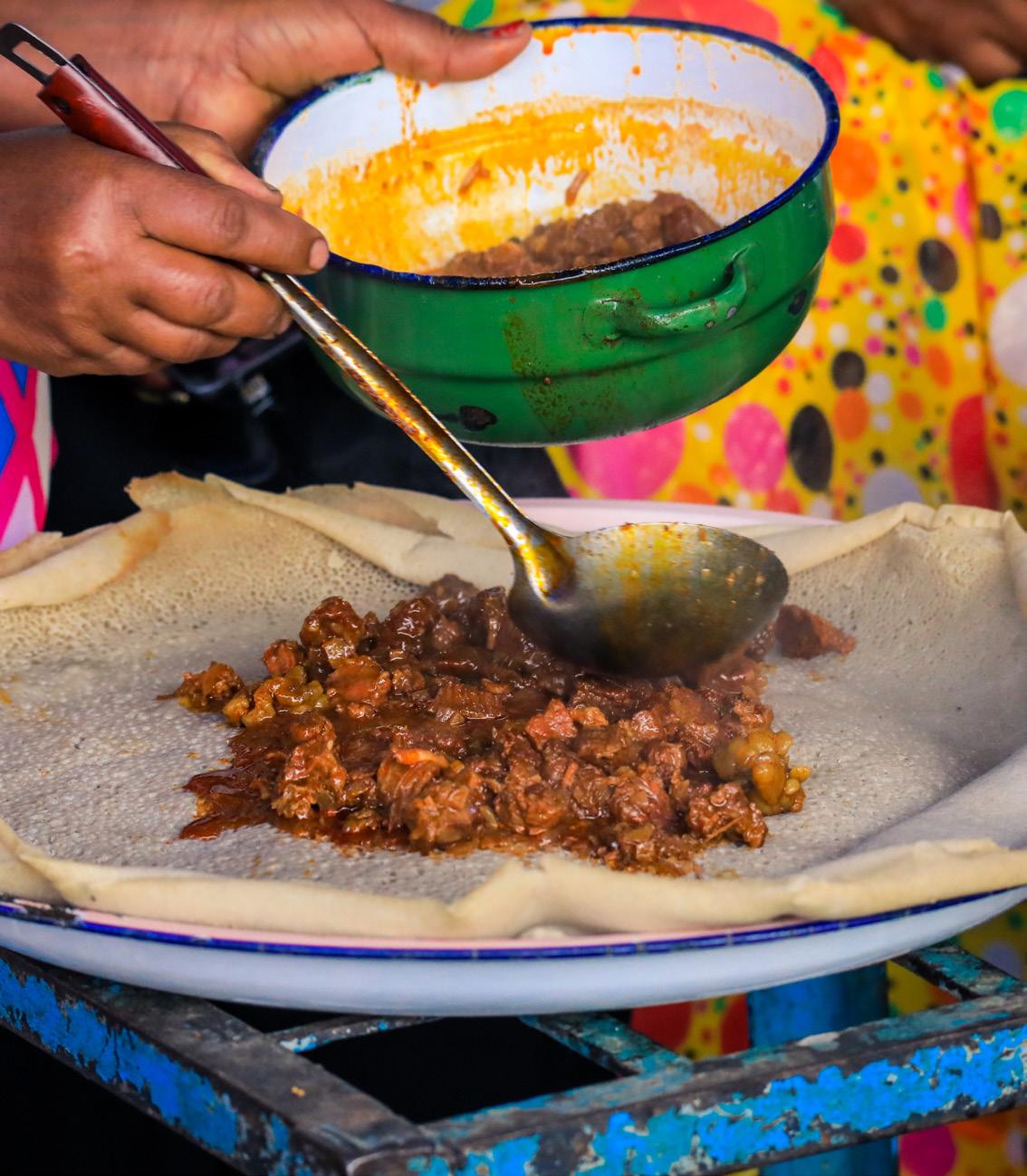
Did you know?
the first recorded use of injera made from teff goes back to 100 B.C.
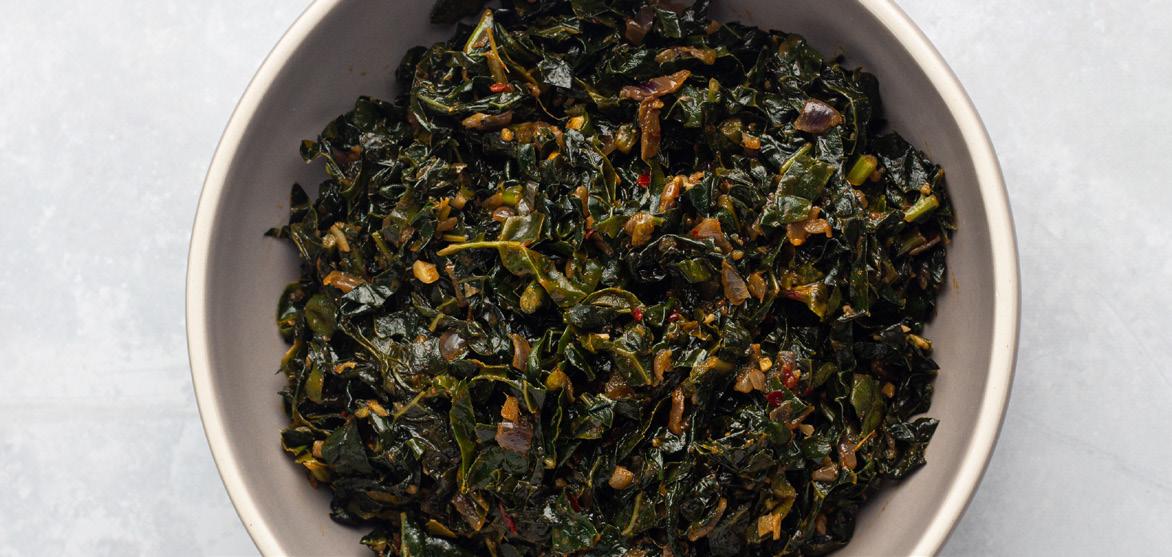
Ethiopian Spiced Kale/Collard Greens Side Dish, Serves 4
This dish brings together spices with the hearty greens, creating a perfect balance of bitter, sour, and warming flavors.
4 tablespoons Ethiopian Spiced Butter
¼ teaspoon green cardamom seeds
¼ teaspoon ground fenugreek
¼ teaspoon nigella seeds (optional)
1 large yellow onion, minced
6 cloves garlic, minced
1 hot chile, stemmed, seeded, and minced
3 tablespoons fresh ginger, peeled and minced
1 big bunch kale or collard greens, stems removed, finely chopped
Sea salt, to taste
Apple cider vinegar, to taste
Begin by grinding the green cardamom seeds, ground fenugreek, and nigella seeds together in a spice grinder.
Using a food processor, mince the garlic, ginger, and chili.
Heat the Ethiopian Spiced Butter in a large, heavy-bottomed sauté pan over medium heat. Once the butter is melted, increase the heat to medium-high.
Add the minced onions to the pan. Stir frequently and cook until the onions have browned and caramelized, about 10 minutes.
Reduce the heat to medium. Stir in the garlic, chili, ginger mixture, and spices. Cook for 3 minutes, stirring often, until everything is fragrant and soft.
Add the kale or collard greens into the pan along with ½ cup of water and a pinch of sea salt to taste. Reduce the heat to low, cover the pan, and allow the greens to cook until they are tender and have a "melty" texture, approximately 10-15 minutes.
Once the greens are cooked to your liking, adjust the flavor by stirring in apple cider vinegar to taste.
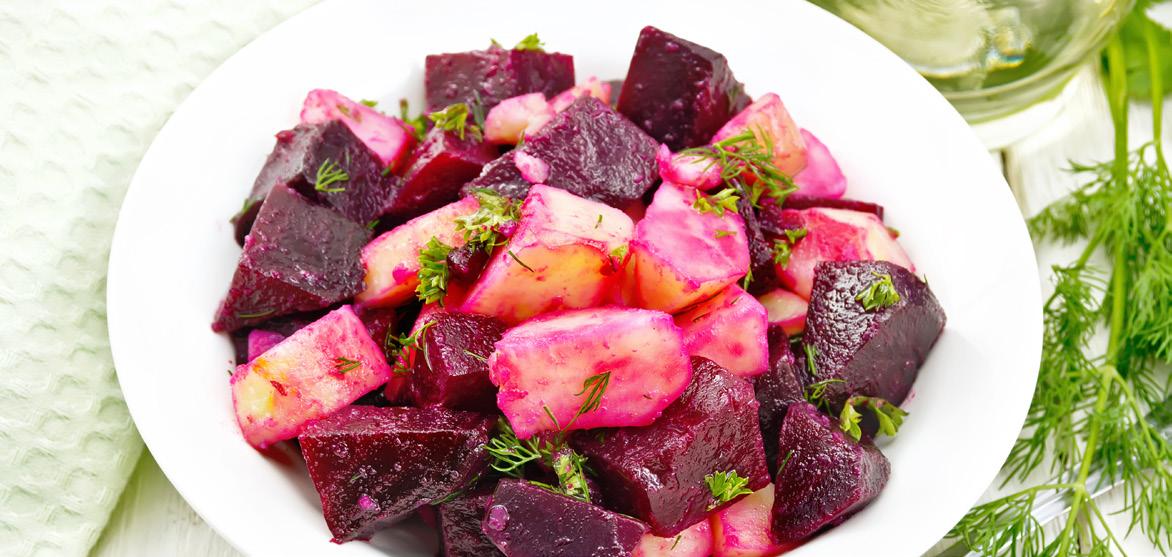
Key Sir Alicha, Serves 4
2 medium potatoes, like Yukon Gold, cut into a medium dice
2 medium beets, peeled and cut into a medium dice
1/2 of a medium onion, finely diced
Sea salt and freshly ground black pepper to tast
1/4 cup avocado oil
2 tablespoons apple cider vinegar
1 clove garlic, minced
2 teaspoons fresh ginger, minced
Ready a big serving bowl. Bring a large pot of water to a boil and add a big pinch of salt. Add the diced potatoes, bring back to a full boil and cook for 5 minutes or until tender. Strain them into the serving bowl, using a spider, sieve, spoon skimmer or use a steamer basket.
Add the beets, bring back to the boil and cook until tender, about 5 to 7 minutes. Strain them in the same manner. Add onions and boil for one minute and strain them into the serving bowl.
While waiting for the veggies to cook, make the dressing. Dress the salad. It will need the salt and pepper to bring the flavors up and out. Not too much, but potatoes always need some salt. You will know when the dressing, potatoes and beets taste balanced between salty, sweet and sour. Freshly ground pepper and good salt really make this dish!
